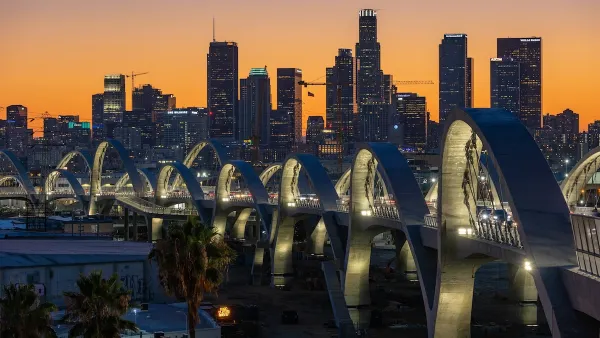Last Tuesday was a big day for me and an even bigger Earth Day for the City of Los Angeles. After 18 months of meetings, focus groups, workshops, conference calls, briefings, and a lot of collective putting together of heads the City Council unanimously passed a landmark green building ordinance. Three hours later it was signed into law by the Mayor.
Last Tuesday was a big day for me and an even bigger Earth Day for the City of Los Angeles. After 18 months of meetings, focus groups, workshops, conference calls, briefings, and a lot of collective putting together of heads the City Council unanimously passed a landmark green building ordinance. Three hours later it was signed into law by the Mayor.
Why is this a big deal? Because Los Angeles is a big complicated city and it is hard to get things done, especially quickly, in big complicated cities. So, for me, being able to create and sustain a collaborative process that wove together the hopes and desires of staff, elected officials, environmental advocates, and the business community is the real precedent setter. With the right issue, the right attitude, sustained commitment, and some momentum it really is possible to move the bureaucracy in a progressive green direction.
But, though its fun to bask in a day of collective accomplishment, the months and years ahead is when things get truly interesting. Starting November 1, all buildings of significant size - 150 a year - will be designed and built to green standards. With this sustained volume of projects it seems that, over time, the market will have no choice to transform and that standard practice will, well, have to rise to a new standard.
So what's next? Folding the green building program into the City's larger climate action plan and using green buildings as the catalyst for creating green neighborhoods.

National Parks Layoffs Will Cause Communities to Lose Billions
Thousands of essential park workers were laid off this week, just before the busy spring break season.

Retro-silient?: America’s First “Eco-burb,” The Woodlands Turns 50
A master-planned community north of Houston offers lessons on green infrastructure and resilient design, but falls short of its founder’s lofty affordability and walkability goals.

Delivering for America Plan Will Downgrade Mail Service in at Least 49.5 Percent of Zip Codes
Republican and Democrat lawmakers criticize the plan for its disproportionate negative impact on rural communities.

Test News Post 1
This is a summary

Test News Headline 46
Test for the image on the front page.

Balancing Bombs and Butterflies: How the National Guard Protects a Rare Species
The National Guard at Fort Indiantown Gap uses GIS technology and land management strategies to balance military training with conservation efforts, ensuring the survival of the rare eastern regal fritillary butterfly.
Urban Design for Planners 1: Software Tools
This six-course series explores essential urban design concepts using open source software and equips planners with the tools they need to participate fully in the urban design process.
Planning for Universal Design
Learn the tools for implementing Universal Design in planning regulations.
EMC Planning Group, Inc.
Planetizen
Planetizen
Mpact (formerly Rail~Volution)
Great Falls Development Authority, Inc.
HUDs Office of Policy Development and Research
NYU Wagner Graduate School of Public Service





























